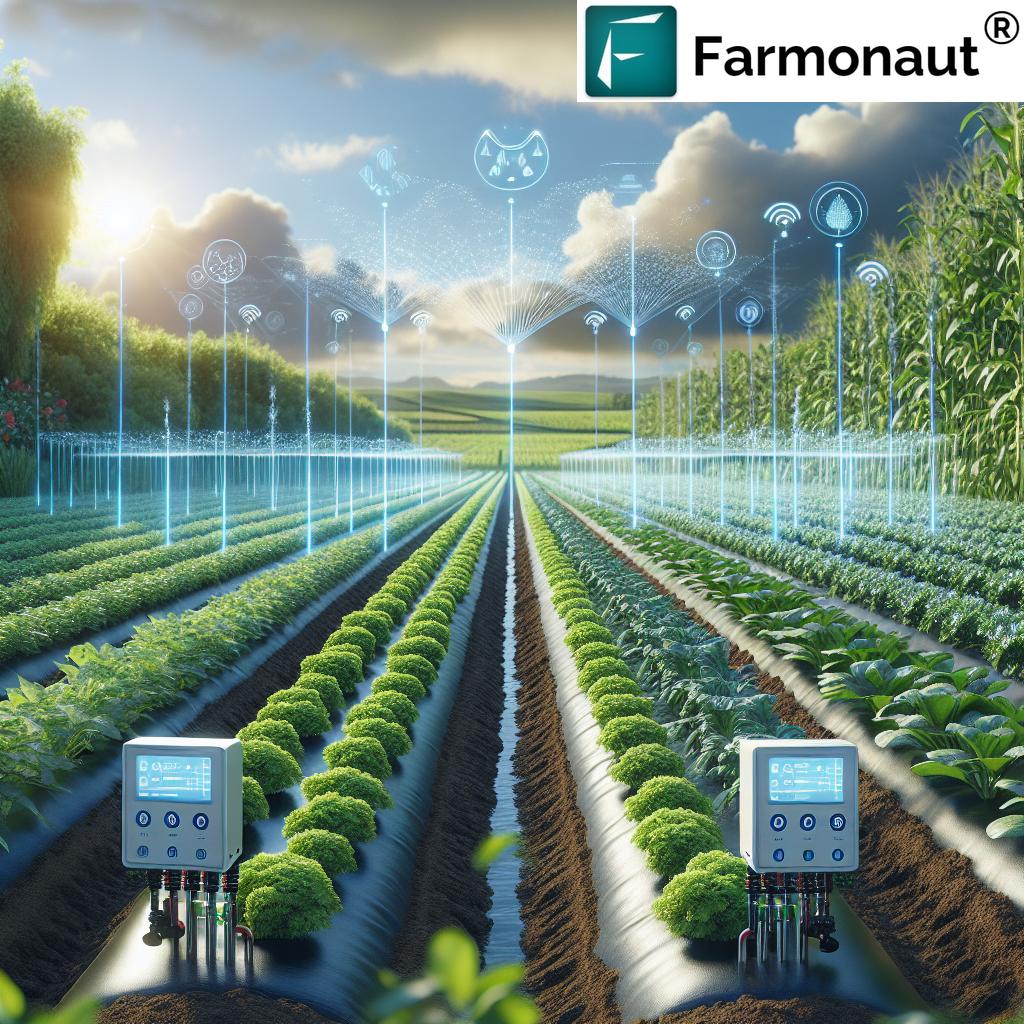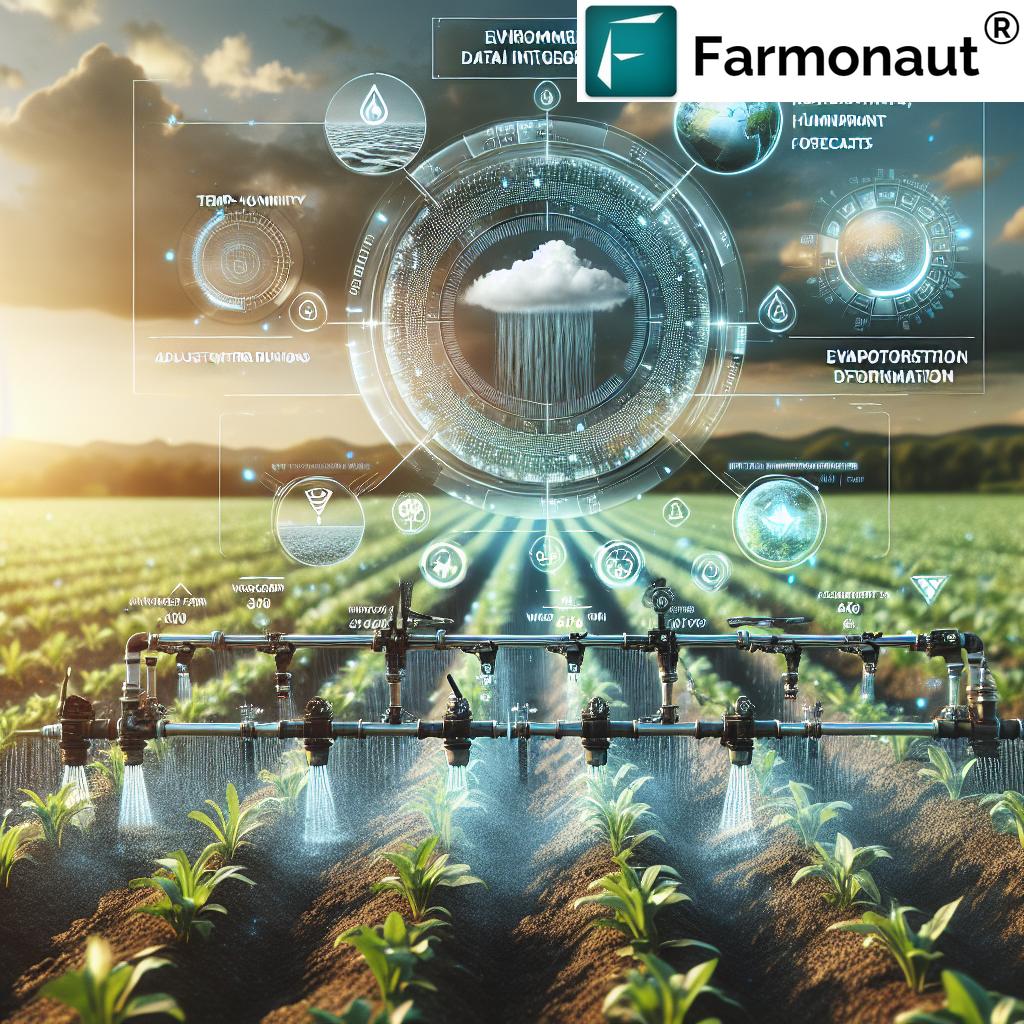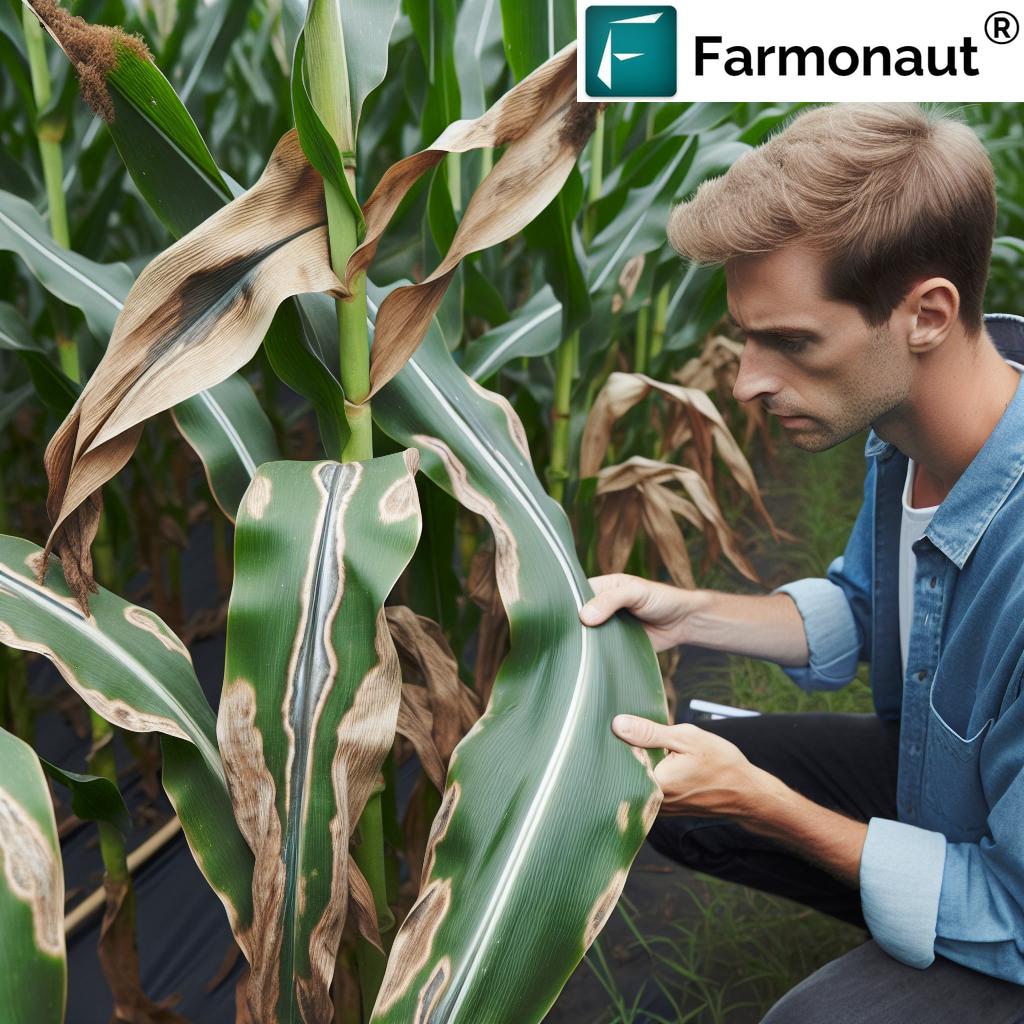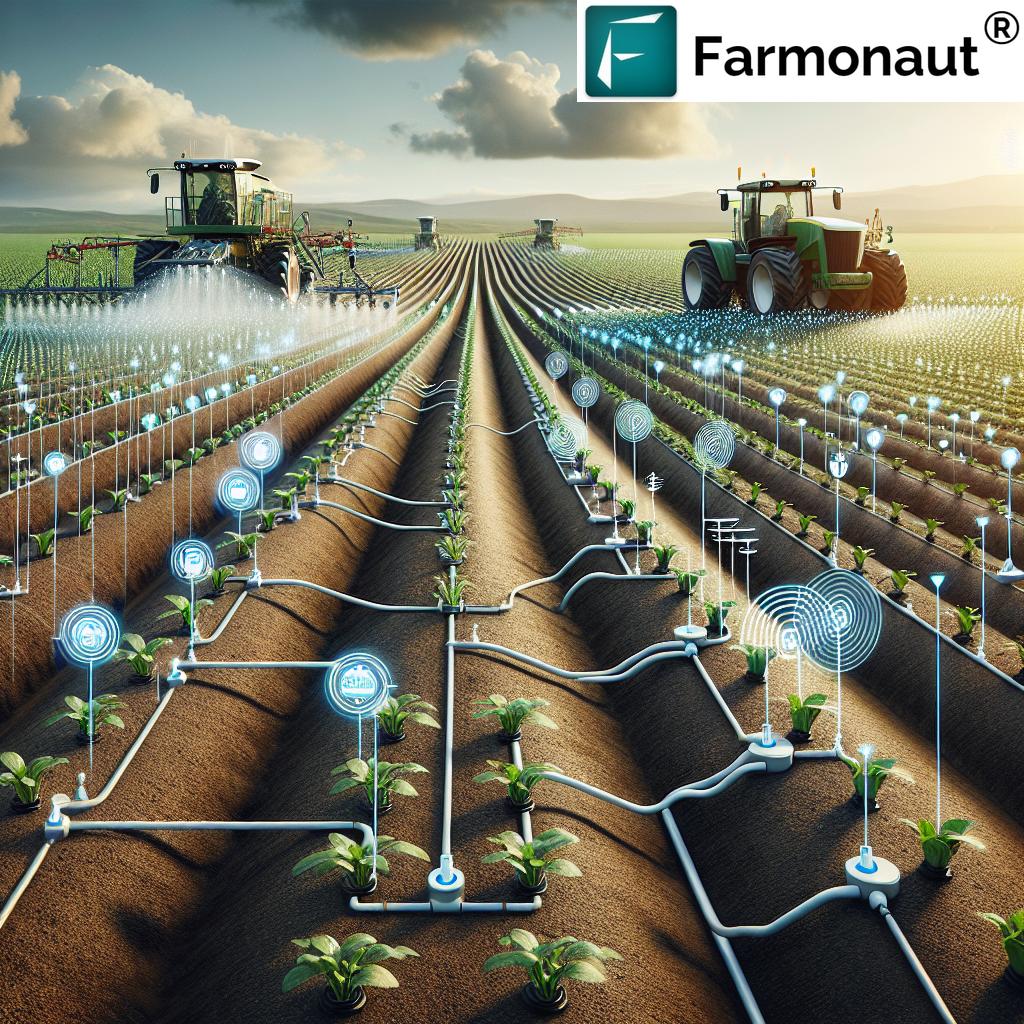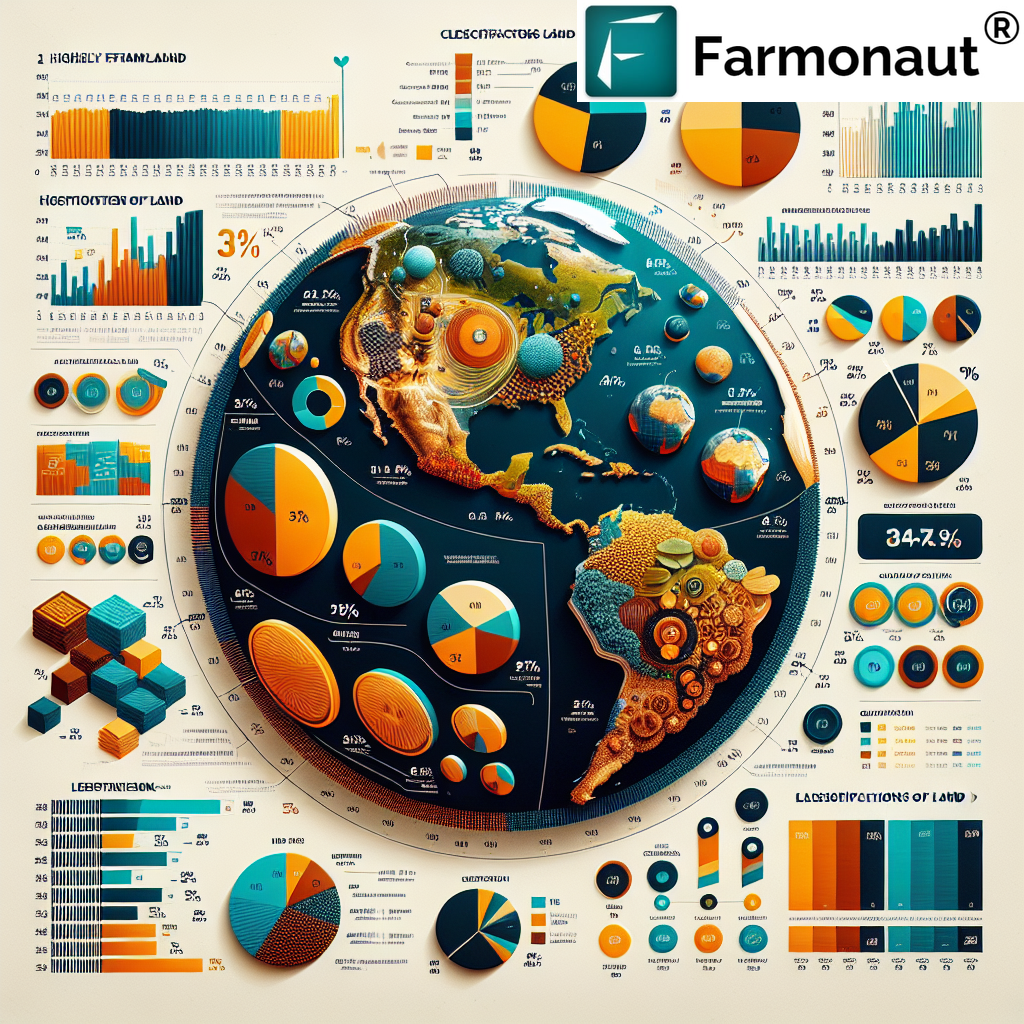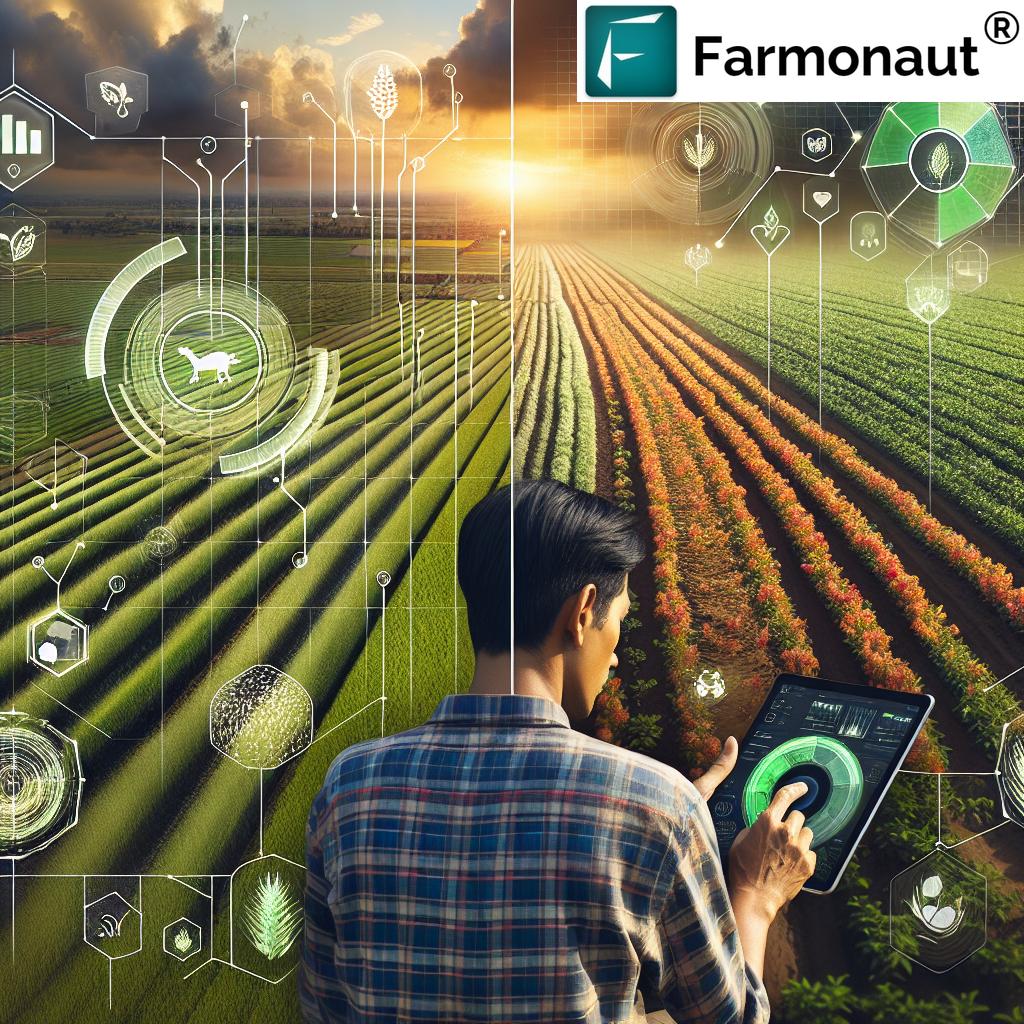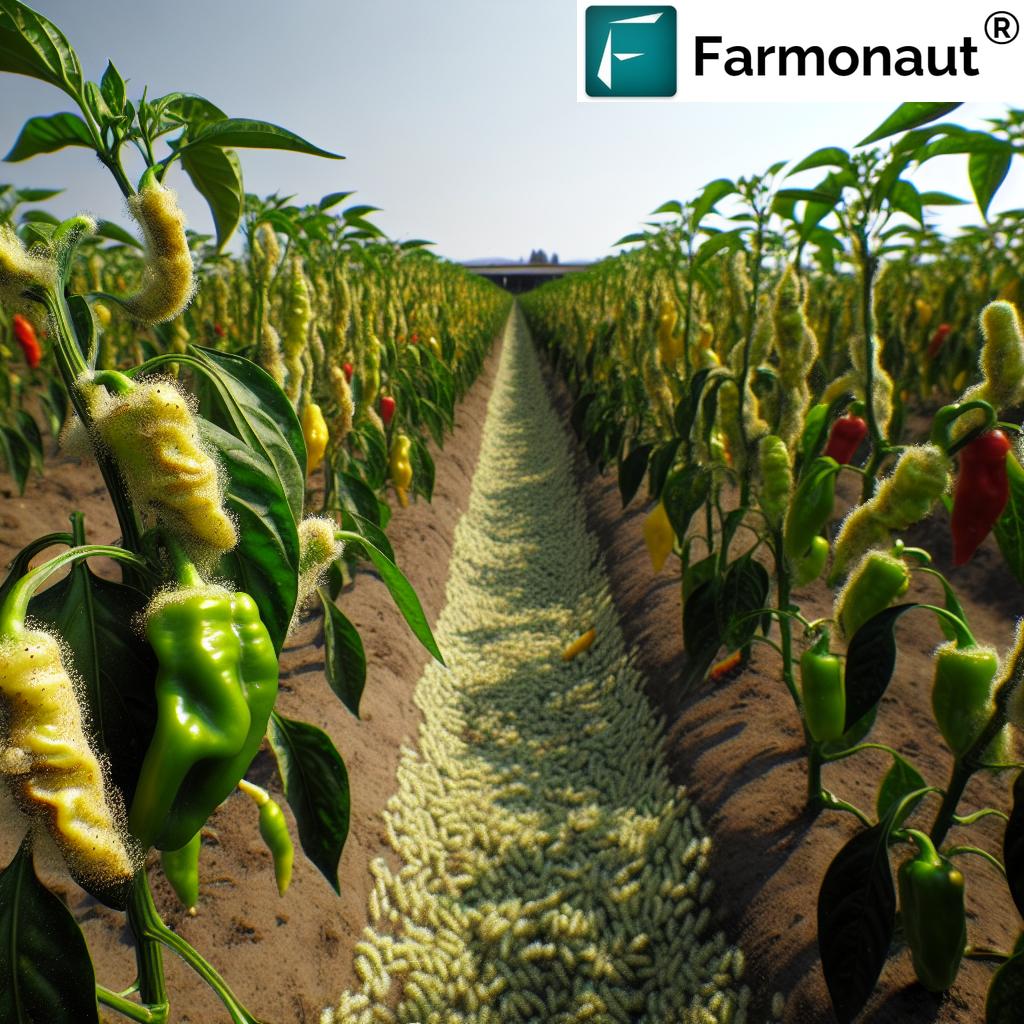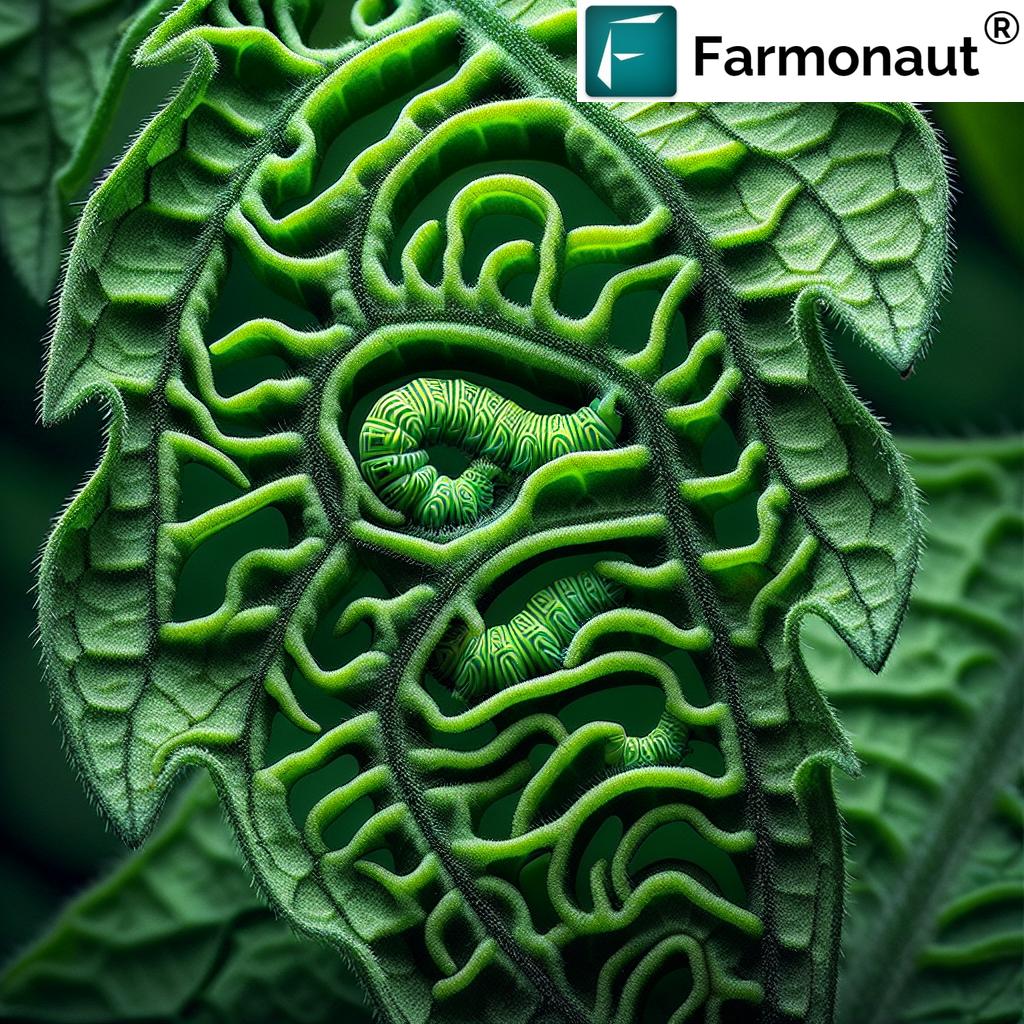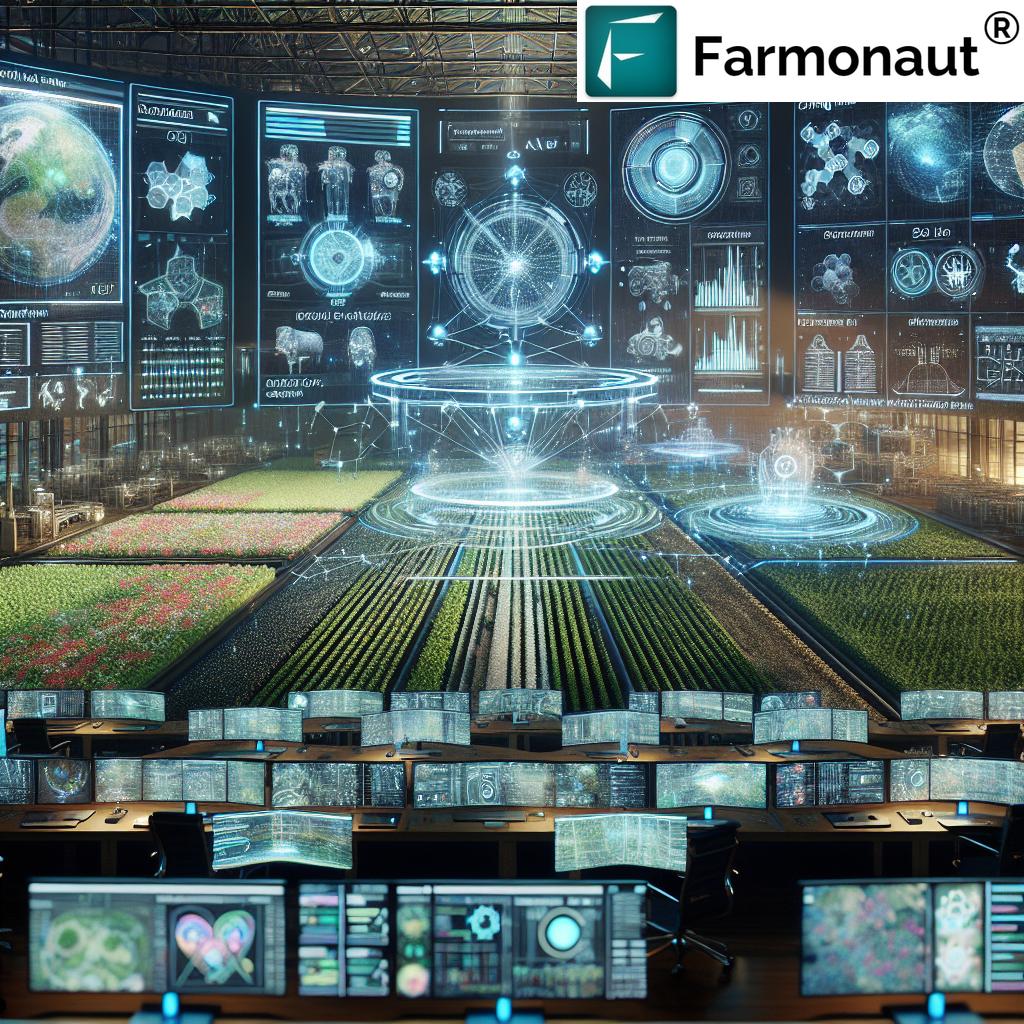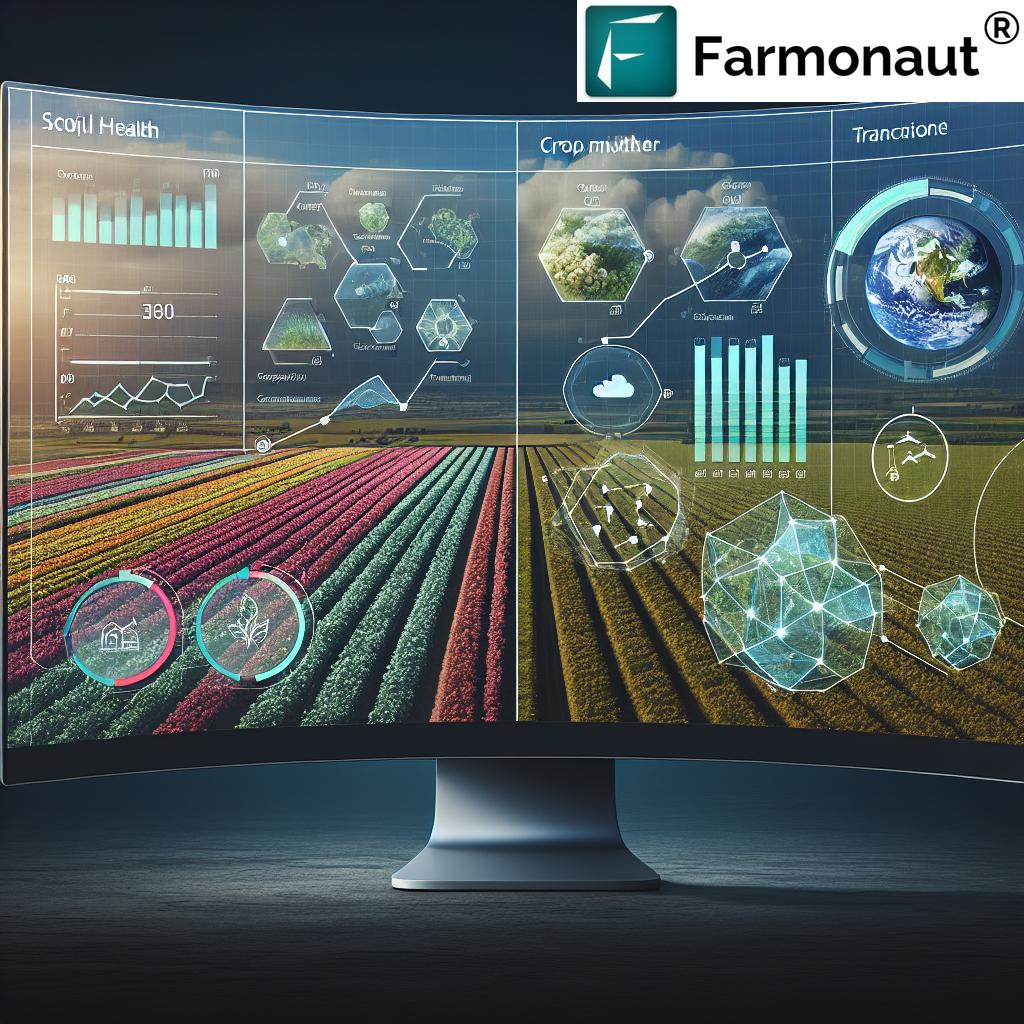Irrigation Controllers: 7 Hacks You NEED for Water Savings
- Introduction
- Trivia – Smart Savings Unveiled
- Types of Irrigation Controllers
- Comparison Table of Irrigation Technologies and Water Savings Potential
- 7 Hacks for Water Savings with Irrigation Controllers
- Benefits of Smart Irrigation Controllers
- Farmonaut & Integrated Smart Farming Solutions
- Challenges and Considerations
- Frequently Asked Questions (FAQ)
- Conclusion
“Smart irrigation controllers can reduce water usage by up to 50% compared to traditional timers.”
Introduction: Embracing Smart Irrigation Controllers for Efficient Water Management
In today’s era of modern agriculture, managing water efficiently is pivotal for sustainable farming practices and environmental conservation. Irrigation controllers, from basic timed models to advanced smart solutions, are at the forefront of this transformation—enabling us to automate, optimize, and elevate our irrigation processes.
By integrating weather-based irrigation systems, soil moisture sensors for farming, and data-driven analytics, we can ensure that our crops receive the optimal levels of hydration. This approach not only enhances crop health and yields but also helps us actively conserve resources and reduce water wastage in agriculture.
In this comprehensive guide, we’ll explore the various types of irrigation controllers, the 7 essential hacks for maximizing water savings, the integration of these technologies with Farmonaut’s industry-leading data-driven solutions, and how these innovations are revolutionizing agricultural practices worldwide.
Join us to learn how smart irrigation controllers, paired with real-time crop monitoring and insights, are advancing efficient water management in agriculture.
Types of Irrigation Controllers: From Traditional to Advanced Smart Solutions
Let’s begin our journey by understanding the landscape of irrigation controllers. From basic to advanced, the evolution of these technologies lies at the heart of modern irrigation technologies—streamlining the watering process, enabling sustainability, and maximizing yield.
1. Traditional Timed Irrigation Controllers
- What they are: These are the basic, entry-level devices that allowing us to set specific times and durations for irrigation cycles.
- How they work: A timer switches the irrigation system on/off, regardless of changing weather conditions or actual soil moisture levels.
- Limitations: Lack of adaptability can cause overwatering during rainfall, under-watering during heatwaves, and significant water wastage.
While straightforward and reliable, these controllers do not automate adjustments based on weather or soil data, making them less appealing for efficient water management in agriculture today.
2. Smart Irrigation Controllers (Advanced)
Enter the world of smart irrigation controllers—incorporating advanced sensors, connectivity, and data-driven decision-making to automatically adjust irrigation schedules based on real-time environmental inputs.
-
Weather-Based Controllers:
- Utilize local weather data: temperature, humidity, wind speed, precipitation.
- Modify watering schedules using weather forecasts, optimizing water use through precise climatic adjustments.
- Prevents overwatering during rainfall and ensures optimal hydration during dry spells.
More on choosing weather-based controllers
-
Soil Moisture Sensor-Based Controllers:
- Equipped with soil moisture sensors to directly measure soil water content.
- Irrigation is performed only if soil moisture falls below a set threshold.
- Ensures crops get adequate hydration without excess, minimizing wastage.
Details on sensor-based controllers
-
Evapotranspiration (ET) Controllers:
- Calculates water loss due to both evaporation and transpiration (called Evapotranspiration, or ET).
- Can be:
- Signal-based (receiving weather station data),
- Historical (using pre-existing crop water use curves), or
- On-site (measuring local weather directly).
- Understanding ET controllers
Comparison Table of Irrigation Technologies and Water Savings Potential
Selecting the right irrigation solution demands we weigh technological innovation, investment, and the water-saving potential each system provides. Here’s a direct comparison to guide your decision-making:
| Technology Type | How It Works | Estimated Water Savings (%) | Initial Cost (Estimated Range) | Ease of Installation | Notable Benefits |
|---|---|---|---|---|---|
| Traditional Timed Controller | Set fixed schedules, no weather or soil feedback | 0–10% | $50–$200 | Easy | Simple, low upfront cost, basic automation |
| Smart Weather-Based Controller | Adjusts irrigation using weather data & forecasts | 15–40% | $150–$400+ | Medium | Reduces water wastage & aligns to local climate |
| Soil Moisture Sensor System | Checks soil moisture, irrigates only if needed | 20–50% | $180–$500+ | Medium | Prevents overwatering, ensures plant needs |
| ET-Based (Evapotranspiration) Controller | Calculates ET using onsite/historical/external data | 20–50% | $200–$600+ | Medium–Hard | Highly precise, effective across crop types |
Note: Actual water savings, installation complexity, and costs may vary by region, farm size, and system integration requirements. Data is based on published agricultural studies and industry averages.
7 Hacks You NEED for Water Savings with Smart Irrigation Controllers
Ready to put efficient water management practices into action on your fields? Here are the seven most impactful hacks to help you optimize irrigation, conserve water, and reinforce sustainability on your farm:
-
Embrace Data-Driven Crop Irrigation Scheduling
Leverage AI tools and satellite-driven insights (such as Farmonaut’s carbon footprinting and large scale farm management features) to analyze past and present field conditions. With real-time weather data, soil moisture levels, and predictive analytics, you can automate the optimal timing and duration for watering each crop zone. This method minimizes manual guesswork and significantly reduces water wastage in agriculture.
-
Integrate Soil Moisture Sensors for Farming Precision
Install soil moisture sensors at varied field depths to directly monitor your soil’s hydration profile. Modern irrigation controllers can automatically adjust watering schedules based on these readings—ensuring plants receive just the water they need for healthy growth while preventing runoff and leaching.
-
Utilize Weather-Based Irrigation Systems
Weather-synced controllers access real-time local weather data (via weather APIs or local weather stations), modifying irrigation frequencies and amounts to match current temperature, humidity, and rainfall conditions. Such integration significantly boosts water and cost savings.
Learn more: Farmonaut’s API for weather and satellite data -
Apply Crop-Specific ET Controllers for Maximum Efficiency
Adjust controllers to calculate precise water loss via Evapotranspiration, using either historical crop water use curves or on-site sensors. ET-based scheduling aligns water input with actual crop demand, boosting yield and minimizing unnecessary consumption.
-
Automate and Synchronize Multiple Zones for Rotational Watering
If you manage a large or diversified field, program your smart irrigation controller to service different zones in succession, based on specific crop and soil needs. This not only improves water distribution uniformity and healthy growth but avoids overlap, runoff, and overuse of pumps.
-
Regularly Monitor and Analyze System and Field Data
Combine controller logs, satellite imagery, and field feedback to continuously tweak and enhance irrigation schedules. Farmonaut’s platform provides real-time updates on crop health and soil moisture—empowering you to act instantly when anomalies or inefficiencies arise.
-
Maintain and Calibrate Sensors and Controllers Consistently
Precision in modern irrigation technologies depends on the accuracy and maintenance of your devices. Dedicate time each season to calibrate moisture sensors, clean weather stations, and update controller firmware—ensuring you always operate at peak efficiency.
Combine these hacks with real-time crop health monitoring and advanced AI advisory for integrated smart farming solutions (explore: Farmonaut’s Crop Plantation/Farm Advisory tools). This approach delivers the maximum benefits of smart farming: increased yield, reduced water consumption, and lasting environmental sustainability.
“Weather-based irrigation systems can increase crop yield by 20% through precise water management.”
Benefits of Smart Irrigation Controllers in Modern Agriculture
-
Water Conservation:
By tailoring irrigation to current environmental conditions and specific crop needs, these controllers significantly reduce water wastage, supporting sustainable farming and ecosystem health.
Smart water management benefits -
Cost Savings:
Optimized irrigation leads to lower water bills and reduced energy expenditure on pumps and distribution, freeing capital for other parts of your farm. Cost benefits of advanced controllers -
Improved Crop Health and Yields:
Delivering predictable, adequate water fosters healthier plants, robust growth, and consistently higher yields. Impact on plant health and yields -
Environmental Sustainability:
Minimizing overwatering reduces runoff, soil erosion, and nutrient leaching. These practices safeguard local water sources and contribute to regional climate resilience. -
Operational Peace of Mind:
Automated, intelligent systems reduce labor dependency, simplify farm management, and make your operations more resilient to weather fluctuations.
Farmonaut & Integrated Smart Farming Solutions: Powering Data-Driven Sustainable Farming Practices
To achieve the full potential of efficient water management in agriculture, modern farms are moving towards a holistic, technology-powered approach.
This is where Farmonaut, a leading provider of satellite-based farm management solutions, becomes indispensable for sustainable farming practices.
- Real-Time Crop Health Monitoring: By analyzing NDVI (Normalized Difference Vegetation Index), soil moisture, and other key data from satellites, Farmonaut identifies crop stress and soil hydration issues before they become visible. This allows us to fine-tune our irrigation schedules proactively.
- Personalized AI Advisory – JEEVN AI: Farmonaut delivers field-specific, real-time irrigation and crop management advice by synthesizing satellite, weather, and soil moisture data. This optimizes crop irrigation scheduling and boosts efficiency.
- Weather Data API & Fleet Management: With easy API access (Farmonaut API and Developer Docs), we can automate controller triggers and connect devices seamlessly. Fleet management tools (Farmonaut Fleet Management) help us keep all assets running efficiently—including irrigation systems and machinery.
- Resource Traceability & Carbon Tracking: Farmonaut’s blockchain-based traceability and carbon footprinting tools align us with global sustainability targets, allowing us to showcase transparent, responsible farming practices to stakeholders and consumers.
- Large-scale, Modular, Flexible: Farmonaut’s subscription-based modular design (Agro-Admin App) empowers individual farmers, cooperatives, agribusinesses, and institutions to scale operations, integrate advanced irrigation, and manage everything from a single interface.
Maximize Returns & Sustainability with Farmonaut
Whether you seek real-time crop monitoring, precision irrigation, sustainability certifications, traceability, or large-scale farm management, Farmonaut provides affordable, accessible, and leading-edge technology to support your goals. Our platform’s focus on smart integration, sustainability, and cost-effectiveness makes every drop count—empowering modern farmers worldwide.
Challenges and Considerations: Selecting the Right Irrigation Controller
While the potential of smart irrigation controllers, sensors, and weather-based systems is undeniable, there are practical considerations all of us must factor in:
-
Initial Investment:
Advanced controllers and sensors can require significant upfront costs—though these are typically balanced by cost and water savings over time.
-
Technical Complexity:
Some systems (especially ET-based or multi-zone solutions) can be challenging to set up and maintain without adequate digital literacy or expert assistance.
-
Maintenance Needs:
Regular sensor calibration, firmware updates, and hardware upkeep are essential for accurate, trouble-free operation.
-
Local Compatibility:
Not every controller is compatible with local climate, soil types, or existing farm infrastructure. Proper research ensures the best fit for your specific needs.
-
Data Reliability:
The success of weather-based controllers and soil moisture sensors depends on access to robust, reliable data (an area where Farmonaut’s APIs and satellite services provide immense value).
For a more detailed FAQ and support, use our knowledge base and reach out to our advisory team via the Farmonaut Web and Mobile Apps.
Frequently Asked Questions (FAQ) – Irrigation Controllers & Smart Water Management
What are irrigation controllers and why are they important?
Irrigation controllers are devices that automate and optimize the watering process for crops by operating valves, pumps, or sprinklers in scheduled (or adaptive) routines. Their smart variants use environmental data, such as weather forecasts and soil moisture, to adjust irrigation automatically—making them crucial for efficient water management and sustainable farming.
How do smart irrigation controllers conserve water?
They align watering schedules with real-time needs, often incorporating weather data, soil moisture levels, and evapotranspiration rates. This precise targeting minimizes overwatering, prevents waste, and maximizes crop yield.
What’s the best way to choose the right controller for my farm?
Start by assessing your farm size, crop types, existing infrastructure, and access to local data sources. If you need deeper integration (satellite/weather/soil data), choose a smart controller compatible with platforms like Farmonaut. Ease of use, initial budget, and desired automation level should all factor into your choice. More tips on selecting smart controllers
How does Farmonaut help with smart irrigation and water management?
Farmonaut delivers satellite-powered crop monitoring, real-time weather and soil insights, and AI-driven irrigation recommendations via mobile, web, and API. This helps farmers of all scales make informed decisions, reduce water usage, and improve outcomes.
Can these technologies really help reduce costs?
Absolutely. By optimizing irrigation for actual crop needs, you reduce water bills, pump energy usage, fertilizer leaching, and increase yield, which ultimately translates to greater farm profitability.
Conclusion: Advancing Agriculture with Smart Irrigation Controllers
Throughout this guide, we’ve seen that irrigation controllers are more than automated timers—they are pivotal tools for transforming water management and resource use in modern agriculture. From the basic form of traditional timers to the advanced data-driven, smart irrigation controllers that use weather data and soil moisture sensors for farming, our ability to tailor water delivery to the actual needs of our crops has never been greater.
By adopting integrated smart farming solutions—such as Farmonaut’s comprehensive platform—we unlock new heights in resource conservation, crop yield improvement, and environmental sustainability. These advancements, available through easy-to-use mobile and web apps, mean farms of any size can now implement sustainable farming practices and thrive even in the face of climatic challenges.
Let us embrace the future of smart, efficient, and sustainable agriculture—starting today with powerful, automated irrigation management.





